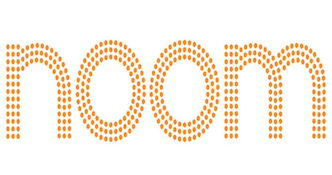Halloween is looming around the corner, on a dreaded day feared most by Garfield and the American working class: next Monday! After a day full of Mischief Night tricks, people will be able to look forward to enjoying all sorts of delectable treats!
But don’t let deceptive nutrition labels about certain candies being healthier or “natural” (a term deemed to have zero bearing on healthiness by the FDA) fool you. We would encourage you to enjoy whatever holiday candies and comfort foods you’d like to enjoy to ring in the frightening festivities, but in responsible, sensible moderation, of course.
Don’t believe us? Let’s cover a few not-so-fun nutrition facts about some of your favorite Halloween candies, and an app we’d recommend for positively reinforcing healthier snacking habits.
1. Two Reese’s 2-Packs Will Exceed Your Daily Sugar Allowance
Two Reese’s Peanut Butter cups amount to 16 grams of sugar per serving. That means two 2-packs of peanut butter cups equate to 32 grams of sugar, 12 grams above the recommended sugar allowance for most women (24g of sugar per day), and just 4 grams shy of the 36 gram recommended sugar allowance for most men.
(Harvard T.H. Chan School of Public Health)
To make bad news worse, Reese’s cups are also filling in more ways than one. According to the University of Rochester Medical Center, a single full-size Reese’s cup contains:
- 9 grams of carbs
- 5 grams of fat
- A whopping 53.38 grams of sodium
Still enjoy these cups if you care of them, but do so in mindful, smart, and sensible moderation.
2. Snickers: The Most Hangry, Not The Most Healthy
Because of the prominence of nuts and peanut butter in Snickers, people might mistakenly assume that Snickers are the healthier candy bar, since nuts are known to be a healthy source of protein and great for cardiovascular health in moderation, per the American Heart Association. Unfortunately, those people couldn’t be further mistaken from the truth.
Although Men’s Health UK notes that a full size 58g Snicker’s bar is 1/4th peanuts, containing 5.5 grams of protein (or above 8% of the average man’s recommended daily allowance), the magazine also shed light on less positive nutritional news regarding Snicker’s Bars:
- A single bar contains 16.5 grams of fat, 15% of the average person’s recommended daily allowance
- A single full-size bar a day equates to an additional 2,072 calories a week
- A single full size bar amounts to a hefty 26.1 grams of sugar
Moreover, although the nuts in Snickers bars provide a decent helping of protein, those nuts fail to deliver an adequate serving of vitamins and minerals. Still enjoy these bars responsibly if you want to, but Snickers bars might not be the healthiest go-to for relieving your hanger.
3. Payday Bars: Less Sugar, More Calories
Like Snickers’ Bars, Payday Bars are a delicious, delectable, peanut-packed amalgam of sweet, salty, and savory flavors. The average Payday Bar outpaces Snickers in the protein department, containing 7 grams per serving. This puts it on par with the serving sizes of some protein bars, but if you’re looking to get a fix before or after a workout, you’d probably be better off sticking to an actual protein bar.
It’s also slightly higher in peanut content than Snickers, meaning that it touts a healthier portion of sugar than those bars. However, some of Payday’s other nutritional facts leave a little to be desired. According to it’s Hershey’s Smartlabel, Payday Bars contain:
- 16 grams of carbohydrates
- 23 grams of combined total and added sugars
- 75 grams of sodium, 22 more than Snicker’s Bars
Based on the third point alone, we would wholeheartedly recommend that people who suffer from hypertension steer clear of Payday bars this Halloween, or limit their intake as much as possible. When it comes to incorporating healthier helpings of protein in your fitness routine, whey bars will be the way to go.
4. Junior Mints, Senior Sugar
Most mints are pretty low on calories or nutritional value, so the same principle would ring true for chocolate coated mints, right? Unfortunately, wrong. While chocolate and mint in tandem might be a good one-two value for your tastebuds, it’s not the best one-two combo nutritionally.
Your average 12-piece serving of Junior Mints contains a one-two hit of 26 grams of carbohydrates and 25 grams of sugar, close to the daily recommended allowance for men and women. Ouch!
5. Milky Way Fun-Sizes Have Some Not-So Fun Serving Sizes
Even a smaller fun-size Milky Way bar still holds a decent 12-carb serving. Moreover, they contain 13 grams of sugar, meaning that three fun-size bars will put you above your daily recommended allowance. Enjoy these chocolate-covered confectionary nougats in moderation!
6. Twix Miniatures: Not-So Miniature Saturated Fats
If you think Milky Way Fun-Size bars pack the biggest portions in a tiny candy package, think again. A 3-piece serving of Twix Miniature Fun Size chocolate bars packs fifteen grams of total sugars, a hefty 60 milligrams of sodium, and 20 grams of carbohydrates.
Proponents and researchers of the ketogenic diet will tell you how detrimental excess simple carbs can be toward fulfilling weight loss goals. Again, enjoy these delicious, delectable treats, but in express moderation!
Which Halloween Candy Is Gluten-Free?
Another way in which Halloween can be health detrimental is when candy worsens the symptoms of Celiac disease, an immune system condition that triggers inflammation and stomach discomfort by way of eating foods with gluten.
Fortunately, there are plenty of Celiac-safe, gluten-free candy options you and your loved ones can indulge in this Halloween. We would encourage you to review these lists of gluten-free candies from Beyond Celiac and the Celiac Disease Foundation to learn more.
Can Halloween Candy Be Healthy?
Since candy is predominantly sugar, there may be no real “healthy” candy options per se. But if you’re looking for a healthier way to indulge, dietitians recommend limiting to 100-calorie sized portions, with a maximum 10 grams of sugar. (The Health Nexus.)
Likewise, if you’re looking for a way to start eating healthier overall, we would emphatically recommend that you work to address the root thoughts perpetuating the problematic eating habits. Noom is a telehealth weight management program that does precisely that, through using cognitive behavioral therapy-informed practices to reinforce healthier habits.
Read our provider review to learn more about Noom, and if you think you’d like to get started using their program, sign up here to get a discounted $0.50 cent 7-day trial! Alternatively, if you're looking for an online doctor who specializes in dietary health, we would also implore you to read our Sesame Care review and use our Sesame Care promo code "SESAME15" for a 15% discount.


